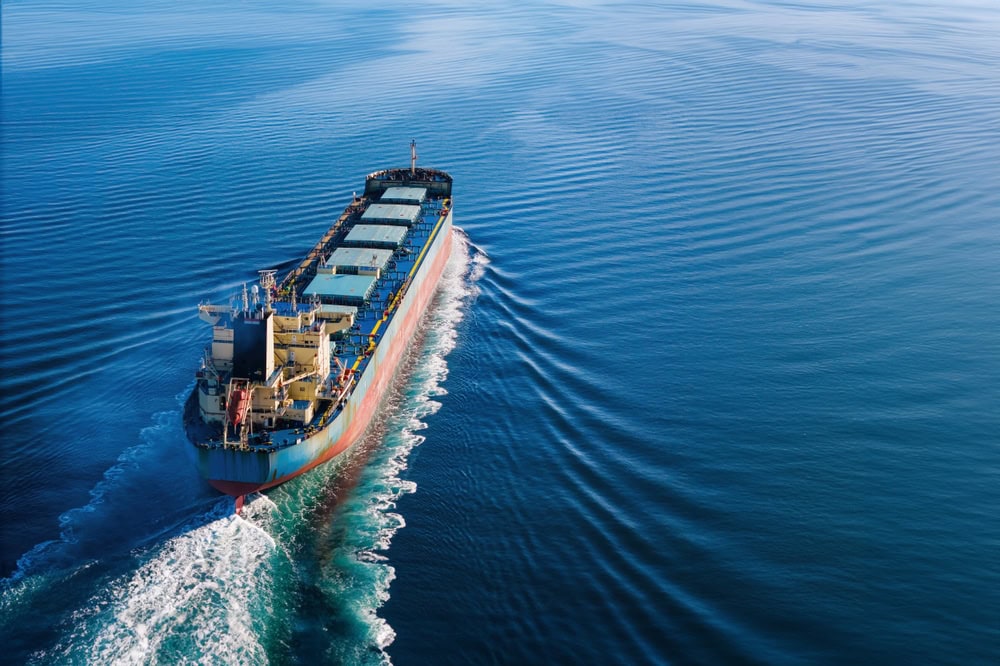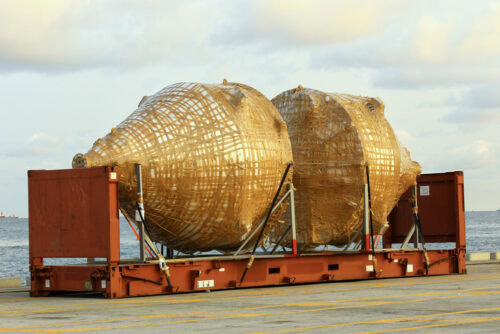9 Types of Containerized Cargo Compared and Explained

In commercial shipping and logistics, containerized cargo plays a pivotal role in facilitating the efficient transportation of goods across international borders. This method of shipping has revolutionized the industry by providing a standardized way to handle various types of cargo, making it easier to load, transport, and unload goods quickly and safely.
As global trade continues to expand, understanding the types of containerized cargo is essential for professionals in the shipping and logistics sectors.
Containerized cargo not only simplifies logistics but also enhances safety and reduces costs. This article aims to provide a comprehensive overview of the different types of containerized cargo available for shipping, as well as their respective benefits and applications.
Whether you’re a logistics manager, a shipping professional, or simply interested in the intricacies of commercial shipping, this guide will help you navigate the various options available and understand how they can meet your shipping needs.
Benefits of Using Containerized Cargo
The use of containerized cargo comes with many advantages that enhance the efficiency, safety, and cost-effectiveness of shipping operations. Here are some of the primary benefits:
Efficiency in Loading and Unloading
Containerized cargo allows quick and organized loading and unloading processes, reducing port turnaround times. This efficiency minimizes delays and helps maintain schedules, which is crucial in today’s fast-paced shipping environment.
Before shipping, it’s crucial to determine the quantity and dimensions of your cargo. Consider these three key factors:
- Total weight: Be aware of the total weight of your shipment.
- Total size (m³): Measure the total volume of your cargo.
- Number of boxes or pallets: Count how many individual items you have.
Understanding the weight and dimensions of your shipment affects your overall costs. Larger, longer, and heavier shipments may require more space, resulting in additional charges on top of standard service fees.
If you cannot fill an entire container, consider a Less than Container Load (LCL) option. With LCL, your smaller shipments are grouped with other orders to make the most of container space, so you only pay for the portion you occupy.
Enhanced Safety for Goods
The robust design of shipping containers provides a protective environment for cargo, shielding it from damage during transit. This minimizes the risk of loss or damage, ensuring that goods arrive at their destination in optimal condition.
Cost-Effective Transportation
By maximizing space and streamlining logistics, containerized shipping can significantly lower transportation costs. Businesses benefit from reduced freight rates, especially when shipping larger quantities of goods.
Versatility in Transporting Various Goods
Containers can hold various products, including raw materials and finished goods. This versatility makes them suitable for various industries, including retail, automotive, and pharmaceuticals.
Protection from Environmental Factors
Shipping containers shield cargo from adverse weather conditions, such as rain, wind, and extreme temperatures. This protection is particularly important for sensitive goods that require stable environmental conditions.
In summary, the benefits of containerized cargo make it a preferred choice in the shipping industry, facilitating smoother operations and greater overall efficiency.
Types of Containerized Cargo
Containerized cargo comes in a variety of types, each tailored to specific shipping requirements. Understanding these types of containers will help you select the right container for your needs.
Dry Containers
Dry containers are the most common type of shipping container, characterized by their fully enclosed structure. They are designed to transport a wide range of dry goods, such as textiles, electronics, machinery, and consumer products. These containers typically come in standard sizes of 20 feet and 40 feet, making them easy to handle and stack.
The enclosed design of dry storage container protects cargo from external elements, such as rain and wind, while allowing for easy loading and unloading. They are ideal for transporting general cargo and can be efficiently stacked during shipping, maximizing space on cargo ships. Their widespread availability and compatibility with various handling equipment make them a reliable choice for businesses engaged in international trade.
Flat Rack Containers

Flat rack containers have a flat, open design without sides or a roof, making it easy to load and unload oversized cargo. Typically constructed from robust materials, flat rack containers can support heavy loads and are often equipped with securing mechanisms to keep the cargo stable during transport.
These containers are perfect for transporting oversized items such as machinery, construction materials, vehicles, and heavy equipment. The lack of walls enables straightforward loading from the top or sides, which is particularly advantageous for large or bulky cargo that cannot fit inside standard shipping containers. Flat rack containers are also easily stacked when empty, optimizing storage space.
Open Top Containers

Open top containers are similar to dry containers but feature a removable tarp cover instead of a solid roof. This design allows for the transport of tall or bulky cargo that cannot fit inside standard containers.
Open top containers are often used for transporting heavy equipment, timber, construction materials, and other large items. The ability to load cargo from the top makes them versatile for various loading methods. Additionally, the removable cover provides flexibility for loading and unloading, while still protecting the cargo from the elements when covered.
Tunnel Containers
Tunnel containers have doors on both ends, allowing for easy access from either side. This design is particularly beneficial in busy port operations where quick loading and unloading are essential for maintaining schedules.
Tunnel container is commonly used for transporting goods that require multiple access points, such as vehicles and large machinery. The dual access feature enhances efficiency during cargo handling and minimizes delays, making them a valuable asset for logistics providers and shipping companies.
Insulated and Thermal Containers
Insulated containers and thermal containers are specially designed to maintain stable temperatures for sensitive cargo. These containers are equipped with insulation materials that help regulate temperature, making them suitable for transporting temperature-sensitive goods.
Ideal for shipping pharmaceuticals, chemicals, and certain food products, insulated and thermal containers ensure that cargo remains within specified temperature ranges throughout transit. This capability is crucial for preserving the integrity and safety of sensitive items, particularly those that can spoil or become hazardous if exposed to extreme temperatures.
Refrigerated ISO Containers
Refrigerated ISO containers, commonly referred to as reefer containers, are equipped with refrigerated containers that maintain a specific temperature for perishable goods during transport.
These containers are widely used for shipping fresh produce, meat, dairy products, and other items that require temperature control to ensure safety and quality. Reefer containers are essential for maintaining the cold chain in the food and pharmaceutical industries, preventing spoilage and ensuring that products remain safe for consumption.
Tank Containers
Tank containers are specialized containers designed to transport liquid materials, including hazardous materials, chemicals, and food-grade liquids. They consist of a cylindrical tank mounted on a frame, making them suitable for bulk liquid transport.
Tank containers are essential for shipping liquids efficiently and safely. Their design minimizes the risk of leaks or spills during transport, while also ensuring compliance with safety regulations. Tank containers are commonly used in the chemical, food, and beverage industries, providing a secure solution for liquid transportation.
Half Height Containers
Half height containers are shorter than standard containers, making them suitable container for transporting heavy cargo, such as coal, scrap metal, or stones. Their design allows for easy loading and unloading, particularly in bulk operations.
The lower height of half height containers makes them easier to load and unload, reducing labor costs and time during operations. Additionally, their reinforced design allows them to carry heavier loads, making them ideal for bulk materials and heavy products.
Cargo Storage Roll Containers
Cargo storage roll container is collapsible units used for transporting goods, particularly in retail and warehousing settings. They are equipped with wheels, allowing for easy movement and handling.
These containers enhance security during transport and storage, providing a safe way to move items such as clothing, electronics, and other retail goods. The collapsible design also facilitates efficient storage container when not in use, making them a practical choice for businesses with fluctuating inventory needs.
Other Specialized Containers
Beyond the common container types mentioned, there are other specialized containers, such as double door containers, side door containers, and platform containers. Each type serves unique shipping needs.
For instance, double door containers provide access from both ends, making it easier to load and unload cargo from either side. Side door containers offer additional access points, allowing for efficient handling of bulky items. These specialized containers ensure that various cargo types can be managed effectively, catering to the diverse requirements of different industries.
Conclusion
Understanding the different types of containerized cargo is essential for improving shipping operations. Each type of container serves specific purposes and offers unique benefits, enabling businesses to select the most suitable option for their needs. Proper container selection enhances the efficiency and safety of shipping operations, ensuring that goods arrive at their destinations in excellent condition.
Choosing the right container not only impacts the efficiency of your operations but also plays a critical role in ensuring the safe and timely delivery of goods. By considering the specific needs of your cargo and the advantages of each container type, you can enhance your shipping strategy and improve overall logistics performance.
